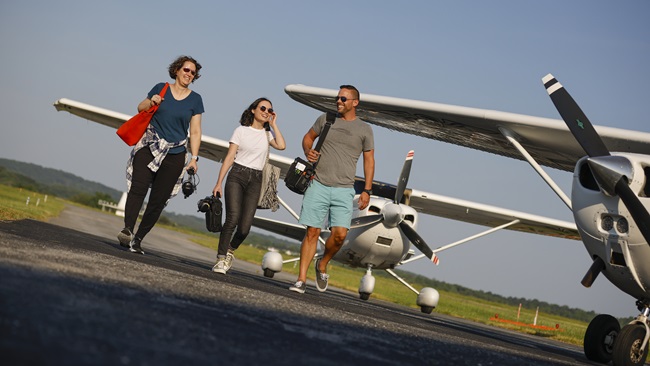When rescuers worked against the clock to locate six members of a family who had not returned from a Dec. 8 recreational outing into Nevada’s mountains, news accounts credited the tracking of cellphone signals with helping to spot the two adults and four children huddled for warmth in their upside-down Jeep.
Reports described the rescue as miraculous and zeroed in on details of the family’s efforts to stay warm in sub-freezing weather. But another key to the outcome was the response of the national aviation organization that keeps search-and-rescue at the heart of its public service mission.
For pilots, the 60,000-plus-member Civil Air Patrol comes readily to mind when an aerial role in a rescue or a response to a natural disaster is launched. Today’s CAP maximizes its effectiveness in the rescuer’s role by incorporating advanced technology, and the training to use it, into its member credo of service to country and communities.
"Unlike our founding CAP fathers, many of whom flew their own airplanes and performed life-threatening missions without any formal training, our more than 60,000 members are now provided with top-notch, year-round professional development training opportunities and with aircraft equipped with the most advanced technologies available for search and rescue," says Maj. Gen. Charles L. Carr, the CAP’s national commander, in a message on the organization’s website.
Cell phone forensics
In the Nevada rescue of six ranging in age from 34 to three years old, cellphone forensics experts from CAP’s state wing "played a critical role in helping rescuers narrow the search area," said Nevada Wing Commander Col. Tim Hahn in a CAP news release.
Fourteen CAP members and two aircraft entered the search on Dec. 9. Two more aircraft joined the effort the next day. A ground searcher with binoculars and a CAP air crew spotted the overturned Jeep Grand Cherokee almost simultaneously, CAP said.
Being part of the successful rescue was "an honor to be relished," noted Hahn.
Radar tracking
While the Nevada rescue response was going on, cellphone and radar tracking experts from another CAP unit were participating in efforts to locate a Beech Bonanza with five aboard that had gone missing somewhere in Idaho on Dec. 1. The aircraft was flying from Baker City, Ore, to Butte, Mont., when the pilot radioed controllers in Salt Lake City, Utah, that the aircraft was having engine trouble.
This time the challenge was more daunting: CAP’s radar and cellphone tracking technology seeks to save time by reducing the search area "from thousands of square miles to the actual crash site or within a couple of square miles." But the rugged, snow-covered terrain had cut off the track of the Bonanza, piloted by Dale Smith of San Jose, Calif., while the aircraft was still well above ground level. About a minute later, the aircraft’s radar target also disappeared.
The two missions—one completed, the other still inconclusive in light of the "serious obstacles" it faced—are among about 600 missions with "well over 150 finds" and 45 lives saved in which Lt. Col. John Henderson of CAP’s 10-member National Radar Analysis Team has participated.
Radar analysis "can be extremely accurate. Over 90 percent of the time we narrow the search area based on forensics information." At times, "We’ve come within 65 feet of where a crash occurred and sometimes miles. It depends on the radar environment," he said.
The radar analysis team and CAP’s two-member Cell Phone Forensics Team came to the same conclusion about the Bonanza’s last known position based on the available "clues and data," said Maj. Justin Ogden, a CAP cell phone forensics expert. But after nine days of searching, by Dec. 11 the effort to find the flight continued mostly as a review of satellite images of the central Idaho search area, and an aerial search pursued privately by the family, said reports.



